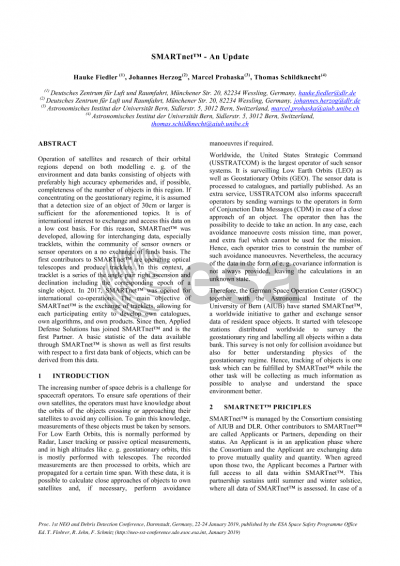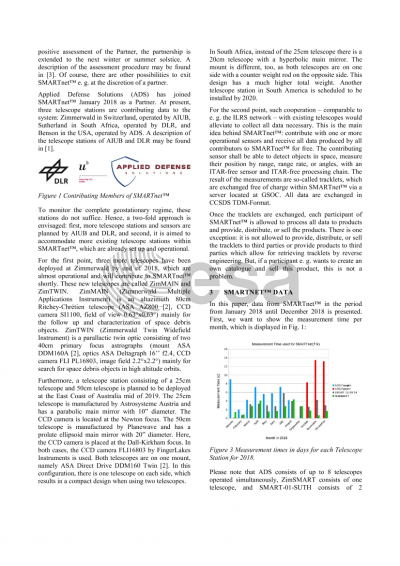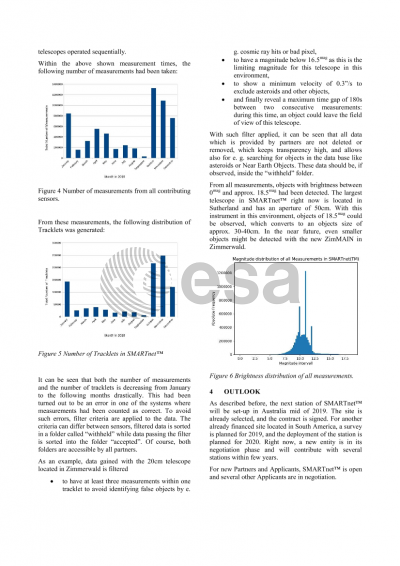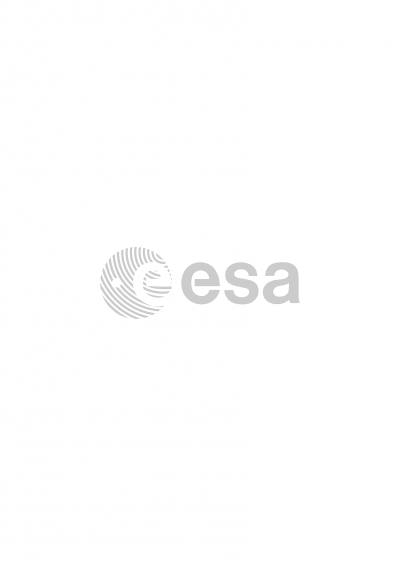Document details

Abstract
Operation of satellites and research of their orbital regions depend on both modelling e. g. of the environment and data banks consisting of objects with preferably high accuracy ephemerides and, if possible, completeness of the number of objects in this region. If concentrating on the geostationary regime, it is assumed that a detection size of an object of 30cm or larger is sufficient for the aforementioned topics. It is of international interest to exchange and access this data on a low cost basis. For this reason, SMARTnet™ was developed, allowing for interchanging data, especially tracklets, within the community of sensor owners or sensor operators on a no exchange of funds basis. The first contributors to SMARTnet™ are operating optical telescopes and produce tracklets. In this context, a tracklet is a series of the angle pair right ascension and declination including the corresponding epoch of a single object.
In 2017, SMARTnet™ was opened for international co-operations. The main objective of SMARTnet™ is the exchange of tracklets, allowing for each participating entity to develop own catalogues, own algorithms, and own products. Since then, Applied Defense Solutions has joined SMARTnet™ and is the first Partner. A basic statistic of the data available through SMARTnet™ is shown as well as first results with respect to a first data bank of objects, which can be derived from this data.
Preview






